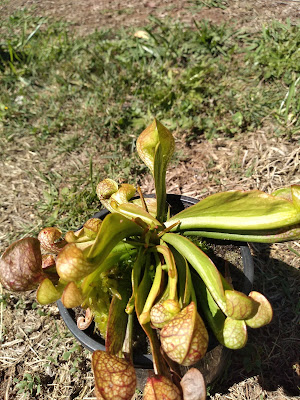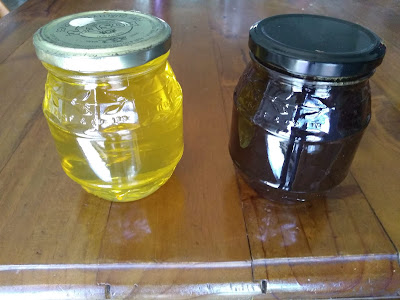I attempted to hybridise a strawberry with a raspberry, and I wrote numerous blog posts along the way documenting the progress.
I produced a few F1 plants, and from them some F2 plants. These plants displayed various morphological differences from both parent species. The plants looked superficially similar to a strawberry, and a lot of aggressive people said this cross was impossible, so I could not be certain that they were true hybrids without getting them independently tested.
The CSIRO offered to test some leaf samples for me to determine if they were hybrids. Long story short, based on protein and peptide level evidence it appears that the F1 and F2 plants are intergeneric strawberry raspberry hybrids.
No one has ever achieved this cross before. This means my plants are the first ever documented intergeneric hybrids between strawberry (Fragaria sp) and raspberry (Rubus sp).
The results can be seen below. The set size represents the number of peptides detected from
the samples (multiple peptides make a protein at the end). The number
on top of each column represents the peptides detected
from each sample type. You can see that the HF2 is completely different from each parent species and HF1.
 |
| Strawberry Raspberry Hybrid - proteomics results |
The below chart represents the top 20 peptide functional classes associated with the four sample type. These results also show the similarity and dissimilarity between the sample types based on their measured peptides.
My first F1 plants germinated in 2017 and the F2 in 2019. It has been such a long process that I was starting to worry that I would never have these tested, or that the results would be inconclusive. It is great to have such definitive results.
My strawberry raspberry hybrids are vigorous and set a lot of fruit. The taste of these strawberry x raspberry hybrids varies from plant to plant from sour to bland to really incredible.
While there is a naming convention for binomial nomenclature, giving
them a common name may be more difficult. My daughter wants to call
them "Stinkleberries". I kind of love that name, but don't think people
would want to eat them.
Below are some pictures of the leaf samples. I have described many of the morphological differences in previous blog posts.
 |
| F1 above, strawberry and raspberry parents below |
 |
| F1 above, strawberry parent below |
 |
| F2 on left, F1 on right |
 |
| Leaf samples that I sent |
I'm not sure what to do from here. These F1 and F2 plants could potentially be crossed with other species or other hybrids. This holds a lot of potential for breeding new plants with increased disease resistance and/or novel tasting berries without using genetic engineering.
It is amazing to think that this was thought to be impossible yet was achieved in my back yard, in my spare time, with no specialised equipment, and extremely limited access to germplasm. Imagine what could be done if I had more time and money to invest in projects like this.
If you want to help me in my plant breeding projects such as this feel free to buy something through my for sale page or even donate a few dollars to me through my PayPal.














































